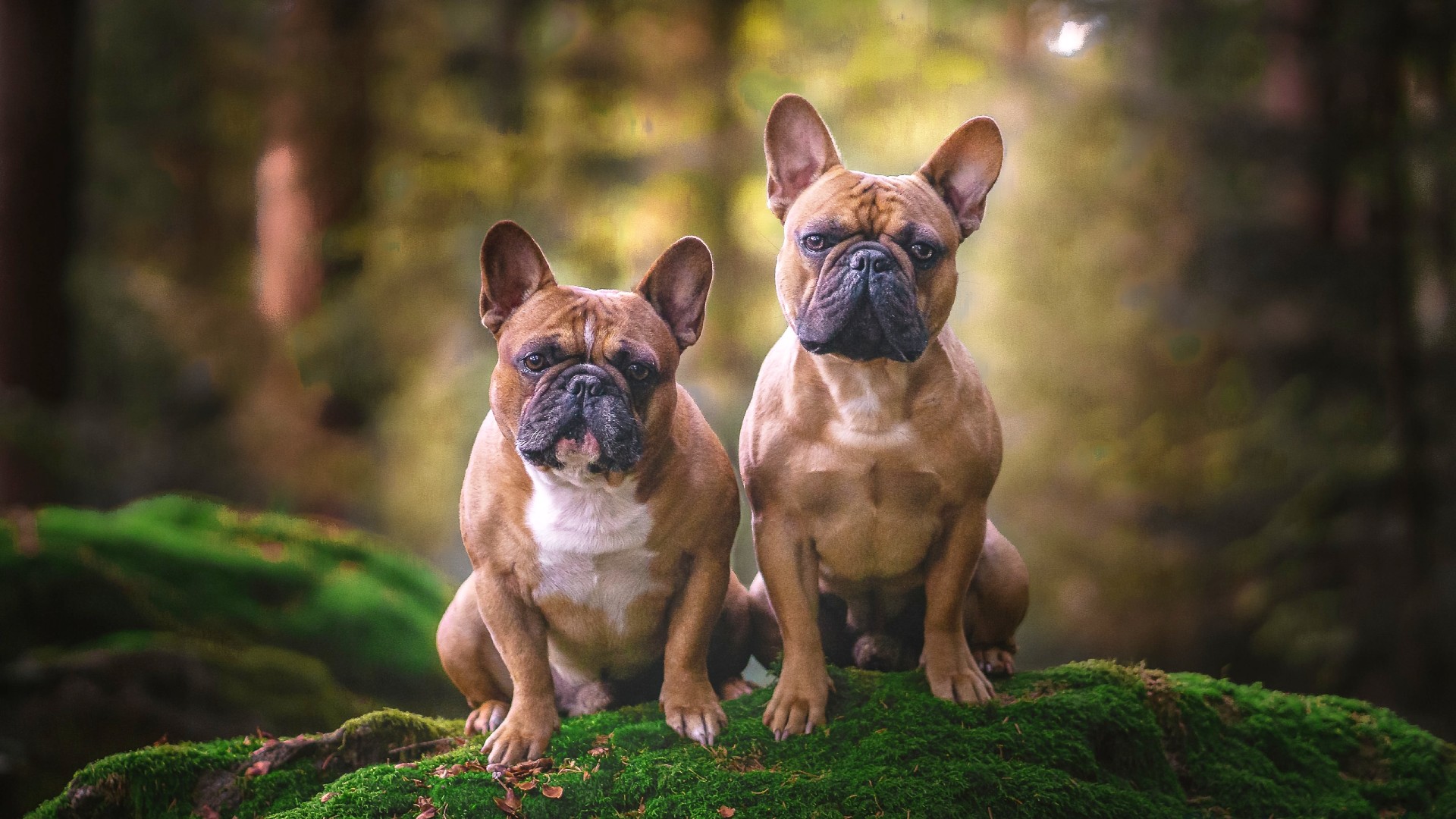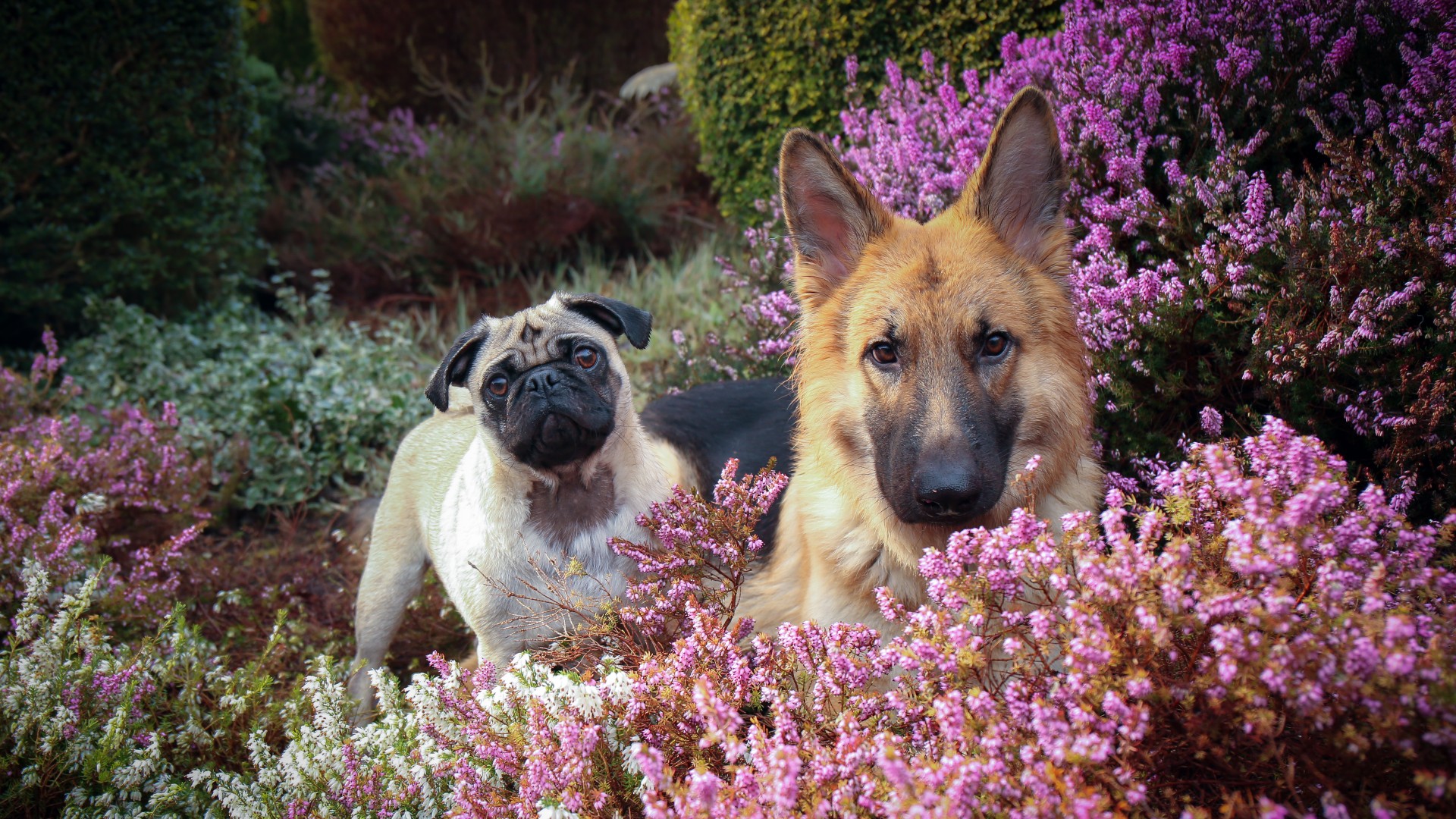Experts find that regular eye contact with dogs is key to bonding
Researchers find making eye contact with dogs is key to forming close relationships between humans and their hounds, with snub-nosed breeds coming out on top

Making eye contact with dogs is the magic elixir when it comes to creating strong bonds between humans and man’s best friend, but mutual gazing is easier for some hounds than others.
According to new research by Hungarian ethologists, regular loving eye contact between pet parents and their canine companions helps build close bonds, with snub-nosed and cooperative breeds finding eye contact the easiest.
"Eye contact is a very important signal for us humans," said the study's lead author, Zsófia Bognár, a Ph.D. student in the department of ethology and a research member of the Senior Family Dog Project at Eötvös Loránd University in Hungary. "It can enhance communication, cooperation, and the relationship between dog and owner."
Dogs that have been bred to respond to visual cues, such as the German Shepherd and Australian Shepherd find direct eye contact easier but that doesn’t mean other dogs can’t master the art of gazing.
“While some dogs might naturally seek eye contact, that doesn't mean others can't learn,” Bognár explains. "Although dog-human eye contact can be affected by at least four independent traits on the dogs' side, it does not mean that these are the only things which determine your relationship with your dog."
When dogs and their owners lock eyes, levels of the love hormone oxytocin are raised in both parties, helping to develop and strengthen their bond. To establish the factors that make eye contact more likely, Bognár and her team put 125 family dogs through a series of experiments.
Each dog began by meeting an unfamiliar experimenter and after a series of exercises, their willingness to make eye contact with their new friend was evaluated. Every time the dog made eye contact with the experimenter, they were rewarded with a treat. Researchers measured how much time elapsed between the dog taking the treat and making eye contact again.
Get the best advice, tips and top tech for your beloved Pets

Bognár and her team discovered that dog breeds with short noses, such as French Bulldogs and Pugs, were the quickest to make eye contact with the experimenter.
"It is likely that they see the human face more sharply because of their special retina, but it is also possible that their owners gaze at them more often as their facial features resemble a small child, a powerful cue for humans. Because of this, dogs with shorter noses may be more experienced in making eye contact," says Bognár.
The researchers also examined whether a dog breed's traditional role influenced their ability to make and maintain eye contact, discovering that breeds like Shepherd dogs and those trained for visually guided work are more obedient and visually cooperative.
“The working or herding dogs are natural because they are bred to perform their tasks alongside humans," Bognár said. "They are in continuous visual contact with their owner or handler."
While breed function plays a part in how naturally and easily some dogs find it to make and maintain eye contact, age and temperament are also key, with younger and more playful dogs forming eye contact faster than older ones.
Bognár is quick to stress that all dogs can be trained to engage in gazing with their humans, strengthening the depth of their bond and connection. Dr. Katherine Houpt, emeritus professor of animal behavior medicine at Cornell University, agrees with Bognár and says it’s easier than you might think.
"It's really easy to train a dog to do it," Houpt explains. "You hold a piece of food away from you. Most, if they can't get what they want, will look up at you. As soon as they do, you say 'look' and give the food. After about 20 times, it becomes a command."

Kathryn is a freelance writer who has been a member of the PetsRadar family since it launched in 2020. Highly experienced in her field, she's driven by a desire to provide pet parents with accurate, timely, and informative content that enables them to provide their fur friends with everything they need to thrive.
Kathryn works closely with vets and trainers to ensure all articles offer the most up-to-date information across a range of pet-related fields, from insights into health and behavior issues to tips on products and training.
When she’s not busy crafting the perfect sentence for her features, buying guides and news pieces, she can be found hanging out with her family (which includes one super sassy cat and a kitten), drinking copious amounts of Jasmine tea and reading all the books.
She has written for a range of publications, including Fit&Well, Top Ten Reviews, LiveScience, Goodto, and Product Hunt.
